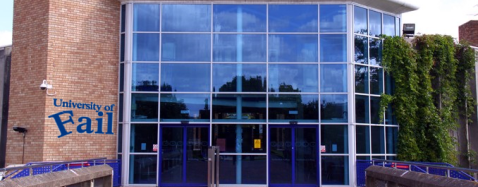Searching for the weak link in university network security

Which is more important in a network: the client machines or the system infrastructure? This could be debated until the cows come home and further debated to include the cows. Personally I would say the latter, but as we have seen this week, one single client machines can open up an almighty can of whoop-ass on the entire network.

One could debate whether it was the update server administrator who was at fault (they were, by the way) as opposed to the machine running Vista, which Microsoft had issued a patch and security advisory for months before. While you, the readers, jumped on the anti-Microsoft bandwagon, I still maintain it was down to the fault of the one individual and not the operating system.
With recent events, along with past and future issues each institution has to face, how do they get the balance right between allowing academic freedom, yet maintaining security of the work produced? Can they provide an open and secure learning environment without diminishing access or availability? There are a few things to take into account.
Every UK college/university are connected to each other
The US academic institution network works somewhat differently to the UK. Most institutions are independent and have no real link or connection to neither central government nor other institutions. Some divisions and departments will work closely with government and other universities on specific topics, but the UK takes the high road on this one.Every college, university and academic unit in the UK (anything that ends with an .ac.uk domain name) connects through JANET, the national education and research network. All institutions are networked through fibre-optics and high speed cables. Yet the infrastructure, mostly hardware, keep the entire network flowing yet carefully cordoned off from each other, allowing massive data transfers and network load balancing, without the risk of spreading malicious malware or localised issues further.
Overall this works well and keeps institutions ticking over with this technological brilliance. But should malware never seen before - a version 2 of Conficker for example - manage to break through the wires, it could infect every other computer on every other educational network in the country.
Wifi networks: student freedom vs. interception of data
One of the wonders of JANET is the Eduroam service - the wireless network which spreads across every university campus in the UK. Though some universities in the US are beginning their new ventures with WiMAX, for now the wireless service that Eduroam provides isn't bad.No wireless protocol is absolutely secure, but for the time being it's still relatively difficult for someone to hack into a wireless network through interception of waves and packet sniffing. Eduroam uses MSCHAPv2, WPA2/TKIP technology along with Active Directory integration (don't ask me how, I wouldn't know where to begin) which allows you to login using your university credentials, but on any university campus across the campus. Eduroam seems to be the world's largest wireless network, and it's completely dedicated to academia.
But wireless technology is necessary for the physical freedom the student needs. No longer should we be confined to the dusty corner of the library. There's grass outside; it's where I tend to gravitate towards when contemplating study.
Academics often work outside the university, you know
Believe it or not, unlike school teachers, academics and scholars don't spend three months of the year wallowing in their own papers and research studies considered "time off". The majority of them seem to work for governmental departments, aiming to improve their speciality field through research and additional understanding. In my eyes, it is the world's universities which keep our respective governments afloat.As these academics working for governments often work together, a certain level of governmental support in the security perspective is naturally provided. Yet in the case of the server hacking of the Climatic Research Unit at the University of East Anglia in an attempt to destabilise the Copenhagen conference, this erupted a number of issues towards university network security in regards to governmental input.
Vulnerabilities, operating systems and preventing attacks
No operating system is entirely secure, and it more often than not relies on the update administrators to keep everything patched. Then again, we tend to use Windows primarily in academia and avoid specialist-only machines such as Mac's for multimedia and Linux for super-computing.But each client computer is a giant hole waiting to be filled with malware, student stupidity and all kinds of other nasties. With group policies and back-end administration, client computers are drones just hooked into the network and often restrict flash drive access and whatnot.
The point is no network is entirely secure. We can try our best but there will always be a weak link in some area of the organisation - whether it is a client side update which failed, to an entire suite of computers not being patched due to the incompetence of an updates administrator.
More often than not, the client machines are the weak link due to the vast number of inputs into the network considering with the vast array of users actually using them. All we can do is learn from our, and others' mistakes.